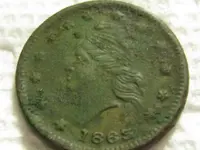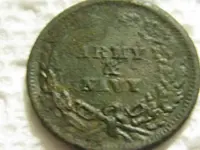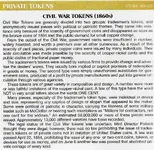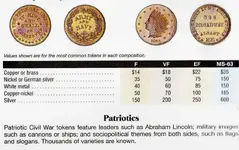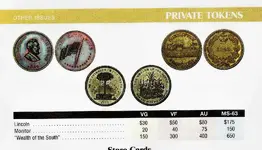Civil War tokens were minted and distributed by private interests and merchants in the United States between 1862 and 1864. They were used mainly in the Northeast and Midwest. The widespread use of the tokens was a result of the scarcity of government-issued coinage during the Civil War. From the years 1862 to 1865 metallic coins were slowly being withdrawn from circulation. Citizens were anticipating the possible increase in metal values and began hoarding gold, silver and copper. This phenomenon forced merchants and tradesmen to issue their own tokens in order that trade and commerce might continue unimpeded.
There were three types of Civil War Tokens — store cards, patriotic tokens, and sutler tokens. All three types were utilized as currency, and are differentiated by their designs. The collectible value of the tokens is determined chiefly by their rarity.
On April 22, 1864 the United States Congress passed a law prohibiting the issue of any one or two-cent coins, tokens or devices for use as currency. On June 8, 1864 an additional law was passed that forbade all private coinage. These laws brought and end to the phenomenon of Civil War tokens.
with the overwhelming use of the Civil war tokens , the individual makers made tokens to the end of the war for Patriotic advertisement sales.
Bill



